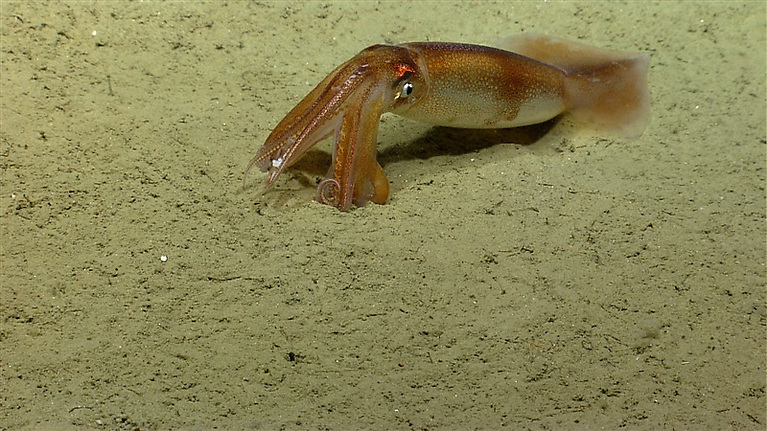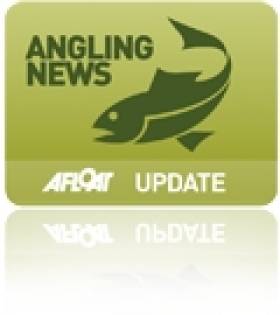Displaying items by tag: squid
Primary classrooms throughout Ireland are celebrating cephalopods throughout the month of October with the launch of the Explorers Education Programme’s new educational resources focusing on squid.
“Marine scientists around the world have been studying squid for many years, learning about their evolution, what they eat and what eats them, as well as their habitats and distribution in the global ocean,” says the Marine Institute’s Patricia Orme.
“When talking about cephalopods, we often think of the charismatic octopus, or the cuttlefish and their ability to change colours. However, squid also have special qualities, including the ability to see long distances in the dark, and being able to fly above the water.”
Squid have also been a point of interest for storytellers, artists, film-makers and museum curators the world over, says Cushla Dromgool-Regan of the Camden Education Trust.
“Led by the work of scientists, researchers and storytellers, the Explorers team are delighted to have produced a series of resources that will inspire teachers and children to learn more about the ocean, and possibly become ocean explorers themselves,” she adds.
Find the new resources on the Explorers microsite, and follow the Explorers Education Programme on Facebook, Twitter and Instagram for more fun facts about squid … and even the fearsome Kraken!
NUI Galway Study Resolves Enigma of Oceanic Squids
Lineages among oceanic squids which have been said to puzzle researchers for over a century have been resolved by scientists at NUI Galway (NUIG).
A team at the NUIG Ryan Institute has been able to name the different family groups and says this provides important clues as to how squid evolved.
The findings have been published in the Zoological Journal of the Linnean Society.
Lead study author Dr Fernando Angel Fernández-Álvarez at NUIG's School of Natural Sciences spent five years collecting tissue from squid during oceanic cruises and when sampling from commercial trawlers.
 Oceanic squid on the bottom of the ocean floor with relatively close-up view of tentacles and suckers. Photo: NOAA OKEANOS Explorer Progra, 2013 Northeast U. S. Canyons Expedition
Oceanic squid on the bottom of the ocean floor with relatively close-up view of tentacles and suckers. Photo: NOAA OKEANOS Explorer Progra, 2013 Northeast U. S. Canyons Expedition
“The aim was to solve the relationships among this amazing group of animals. I believe this study is an important milestone for the field and a good starting point for performing in-depth studies on the evolutionary trends that shape the huge diversity of oceanic squids,” he said.
“Our research could also be useful as we try to understand how our oceans will respond to ever-increasing pressures from human activities,” he added.
The research team used a method known as genome skimming to reveal the full sequence of DNA and identify relationships among squid.
Each of the discovered groups was named based on the rules dictated by the International Code of Zoological Nomenclature, the team says.
It suggests that scientists will have a way to accurately identify and describe the biodiversity of these marine creatures in the future.
Oceanic squids are a highly significant part of the marine food web.
They are voracious predators and provide the main meal of toothed whales and other endangered megafauna.
They include the largest group of commercially fished cephalopods, the flying squids.
The researchers also discovered what they say are "unexpected and as yet, unexplained, relationships".
"For instance, delicate deep-sea glass squids are more closely related to powerful muscular Humboldt squids and to the unusual monogamous diamondback squid, than to other oceanic squids," the NUIG team states.
“How these remarkable changes in form came about is not yet understood," Prof Louise Allcock of NUIG's School of Natural Sciences, Ryan Institute, explained.
 An oceanic squid resting on the seafloor, changing colour as it sits on its elbows to breathe. Photo: NOAA OKEANOS Explorer Program, 2013 Northeast U. S. Canyons Expedition
An oceanic squid resting on the seafloor, changing colour as it sits on its elbows to breathe. Photo: NOAA OKEANOS Explorer Program, 2013 Northeast U. S. Canyons Expedition
“Oceanic squids are an amazingly diverse group of cephalopods – molluscs with arms and tentacles like squid, octopus and cuttlefish - with fascinating adaptations to their watery environment," she said.
" For example, glass squids use their body cavity as a fluid-filled buoyancy chamber, while chiroteuthids develop fishing lures at the end of their tentacles," she said.
“This study also highlights the importance of public scientific collections in addressing long-standing scientific issues," Prof Allcock added.
"We supplemented the material we collected ourselves with samples from various museums including the Smithsonian Institution in the USA, the Biological Reference Collection of the Marine Science Institute in Spain and the Australian Museum, allowing us to have a truly comprehensive oversight of oceanic squids globally,“ she said.
The study was funded by the Irish Research Council through the Government of Ireland Postdoctoral Fellowship Awards.
Read the full study in Zoological Journal of the Linnean Society here
Catching Your Dinner Off the West Coast
Deep sea fishing is alive and well off the west coast of Ireland, and not only is it a hugely enjoyable sport - just one catch can be enough to feed the whole family.
That's what The Irish Times' Elizabeth Birdthistle discovered in the last of her series on catching your dinner in Ireland.
Birdthistle set out for the waters off Inis Boffin with John Brittain, who has been skippering his angling boat Bluewater for 20 years for the charter fishing season between April and October.
The boat takes up to 12 anglers who are more than eager to pay €70 a head to catch large cod, pollack and mackerel in abundance. Even novices are welcome, as the fee covers all rods, tackle and tuition.
Squid and octopus are also on the cards, as are some larger quarries such as sharks and ray - though these can only be fished in a tag-and-release programme. Smaller catches also get thrown back to propogate.
"The biggest shark caught here weighed 150lbs," writes Birdthistle, "and, as with all sharks caught, Brittain must tread with caution to release the giant hook or else the shark returns to the deep with part of his hand.
"The tagged sharks have been caught as far away as the Grand Banks off Newfoundland and the Cape Verde islands."
The Irish Times has more on the story HERE.
























































